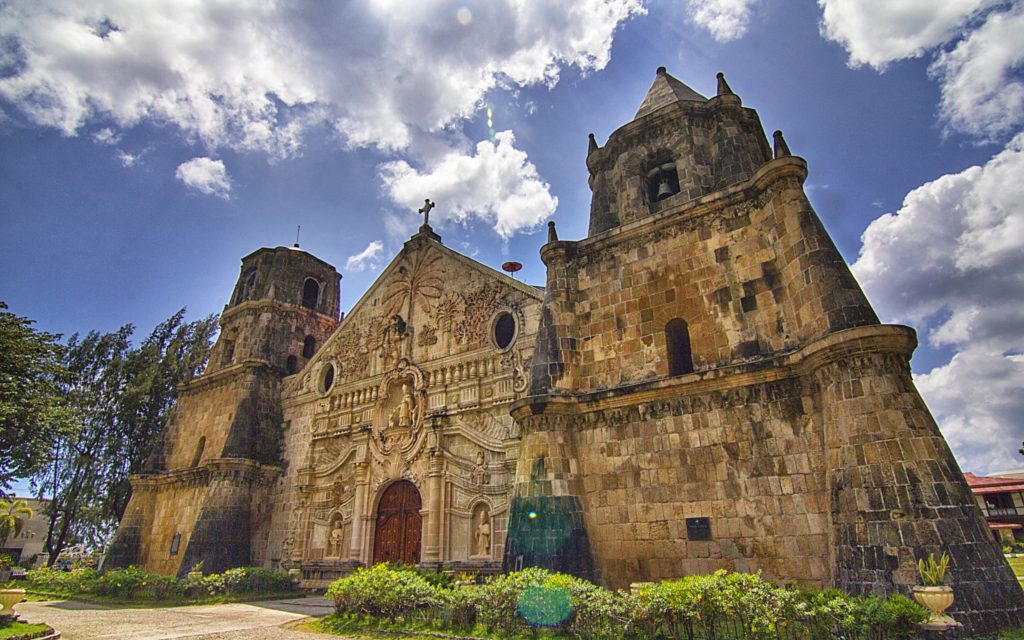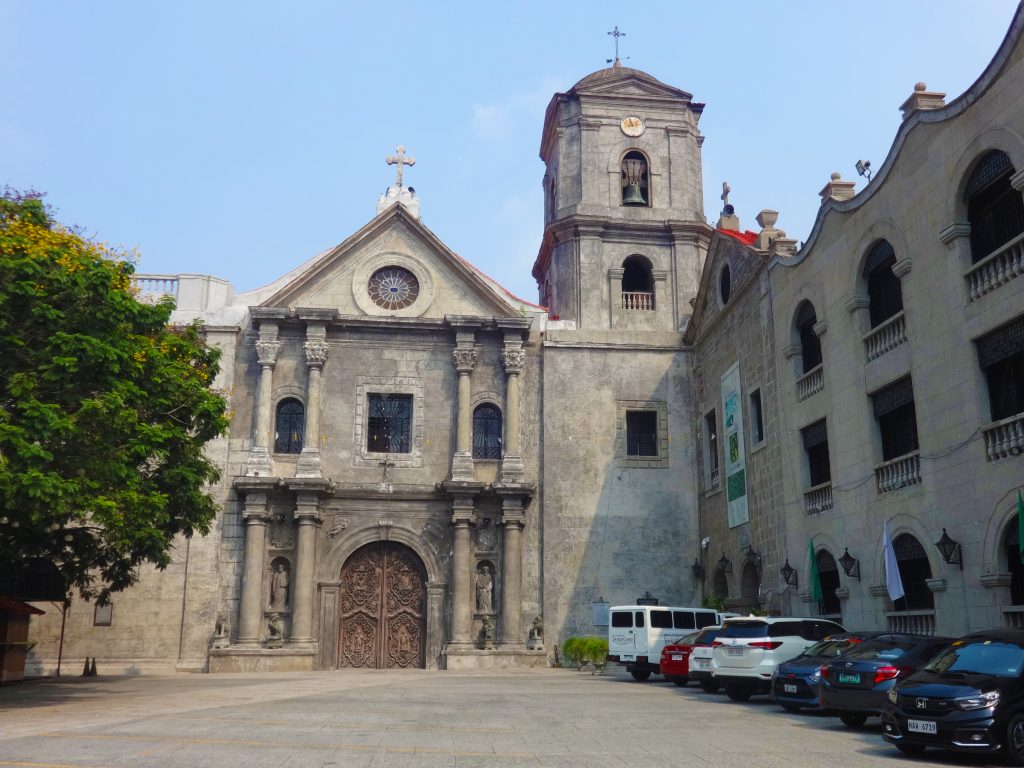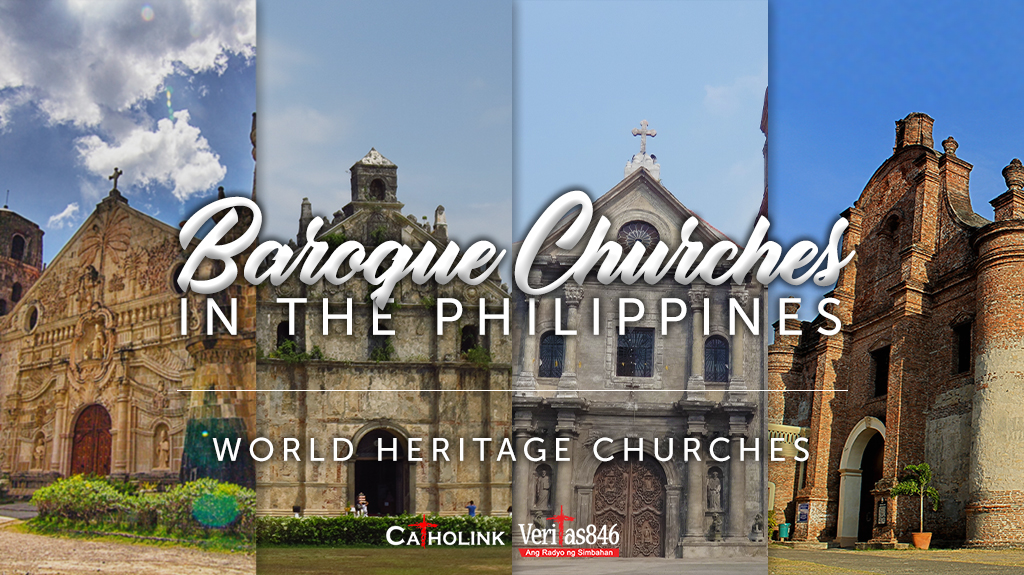“All this,” said David, “the LORD made me understand in writing by His hand upon me, all the details of this pattern.” (1 Chronicles 28:19)
Theatrical, dramatic, and grandiose – these are some of the features of Baroque architecture. Aesthetic details that impress the eye as well create an influential appeal. Through art and architecture, church builders were able to express the abundant grace of God in extravagant details. The Philippines, home to millions of Catholic faithful, was blessed to be a home as well of churches that feature this unique European architecture which started in the late 16th century.
Here are four Baroque Churches in the Philippines that the Catholic faithful can visit in their Lenten pilgrimage this year:
Miag-ao Church – Santo Tomas de Villanueva Parish (Miag-ao, Iloilo)

Before the construction of its present church, the town of Miag-ao experienced church burnings and lootings twice in the mid-1700s. In December 1786, the present Miag-ao Church’s construction was started with the provision that it would be “built like a fortress” under the pastoral leadership of Fray Francisco Maximo Gonzales.
The Miag-ao Church features a baroque-romanesque style. Decorated with carvings of shrubs, the church’s facade displays Saint Christopher carrying the Child Jesus. At its center dominates a large stone sculpture of the parish’s patron saint, Saint Thomas of Villanova. Life-sized statues of the Pope and Saint Henry flank the facade’s entrance. Two belfries support the facade on both sides with one being two-storeys high and the other towering in three-storeys high. The church was finished in 1797 and in 1830, the left belfry was constructed with an additional structure to equal the height of the right belfry.
Paoay Church – Saint Augustine Church (Paoay, Ilocos Norte)

With its construction started by Augustinian friar Father Antonio Estavillo in 1694, Paoay Church was completed in 1710. The church featuring European baroque style is adaptively constructed with enormous buttresses to increase structural integrity against destructive earthquakes.
Structured with 24 huge buttresses situated at the sides and back of the church, Paoay Church survived historical huge earthquakes. The church, detailed with coral stone blocks and brick walls, features not only baroque architecture but as well Javanese architectural style. In its facade, a carving of the Augustinian coat of arms can be seen.
At the side of Paoay Church stands a few meters away a bell tower that serves also as support against earthquake damage.
San Agustin Church – Archdiocesan Shrine of Nuestra Señora de la Consolación y Correa (Intramuros, Manila)

Starting its building in 1571, the San Agustin Church then named Iglesia y Convento de San Pablo was first built with nipa and bamboo. After it was burnt in 1574 due to the invasion of the Chinese Pirate Limahong in Manila, the church was reconstructed with wooden materials. With its low structural integrity against fire accidents, the church was again destroyed in 1583.
The design of San Agustin Church and its construction using adobe stones started in 1586. Since then, the church has been the oldest stone church in the Philippines. The church survived major earthquakes as well as the Battle of Manila during World War II.
Pedro Galende noted in his book Philippine Church Facades that the facade of the church was “built along neoclassic lines” with column sets in Ionic and Corinthian styles. Inside the church, vaulted ceiling displays frescoes of “intricate trompe l’oeil”. The church used to have two bell towers situated at its sides. After a series of strong earthquakes hitting Manila in 1880, its left bell tower was permanently removed.
Santa Maria Church – Nuestra Señora dela Asuncion Church (Santa Maria, Ilocos Sur)

The Santa Maria Church in Ilocos Sur built by Augustinian Friars around 1765 situates on the top of a hill in the town of the same name. From the town’s edge, a stairway of 85 steps made in granite rock leads to the church.
Enforced with thick buttresses, the Santa Maria Church stands protected against earthquakes. The church served as a fortress during the Spanish era. Two cylindrical columns flank the church’s brick facade. The colossal bell tower standing nearby the church was situated in 1810.
WORLD HERITAGE SITES
In 1973, these four historical churches were declared National Cultural Treasures. Twenty years later, in 1993, UNESCO inscribed these four Baroque Churches in their list of world heritage sites.
REFERENCES:
Baroque Churches of the Philippines: https://whc.unesco.org/en/list/677/
Baroque Architecture: https://www.designingbuildings.co.uk/wiki/Baroque_architecture#:~:text=Baroque%20architecture%20is%20a%20style,features%2C%20sometimes%20leaving%20them%20incomplete.
History of Miag-ao Church https://www.miagao.gov.ph/about-miagao/history-of-miagao-church/
Paoay Church: https://app.philippines.travel/experiences/paoay-church
The History of the San Agustin Church: http://www.artesdelasfilipinas.com/archives/119/the-history-of-the-san-agustin-church
The Architecture of San Agustin: https://simbahan.net/2007/12/26/the-architecture-of-san-agustin/
San Agustin Church: https://www.lonelyplanet.com/philippines/manila/attractions/san-agustin-church/a/poi-sig/391173/357305
Santa Maria Church: https://app.philippines.travel/experiences/santa-maria-church
Nuestra Señora de la Asunción: https://www.wmf.org/project/nuestra-se%C3%B1ora-de-la-asunci%C3%B3n
Church La Nuestra Señora de La Asuncion, UNESCO SITE, Ilocos Sur, Philippines: https://heroesofadventure.com/listing/church-la-nuestra-senora-de-la-asuncion-unesco-site-ilocos-sur-philippines/
